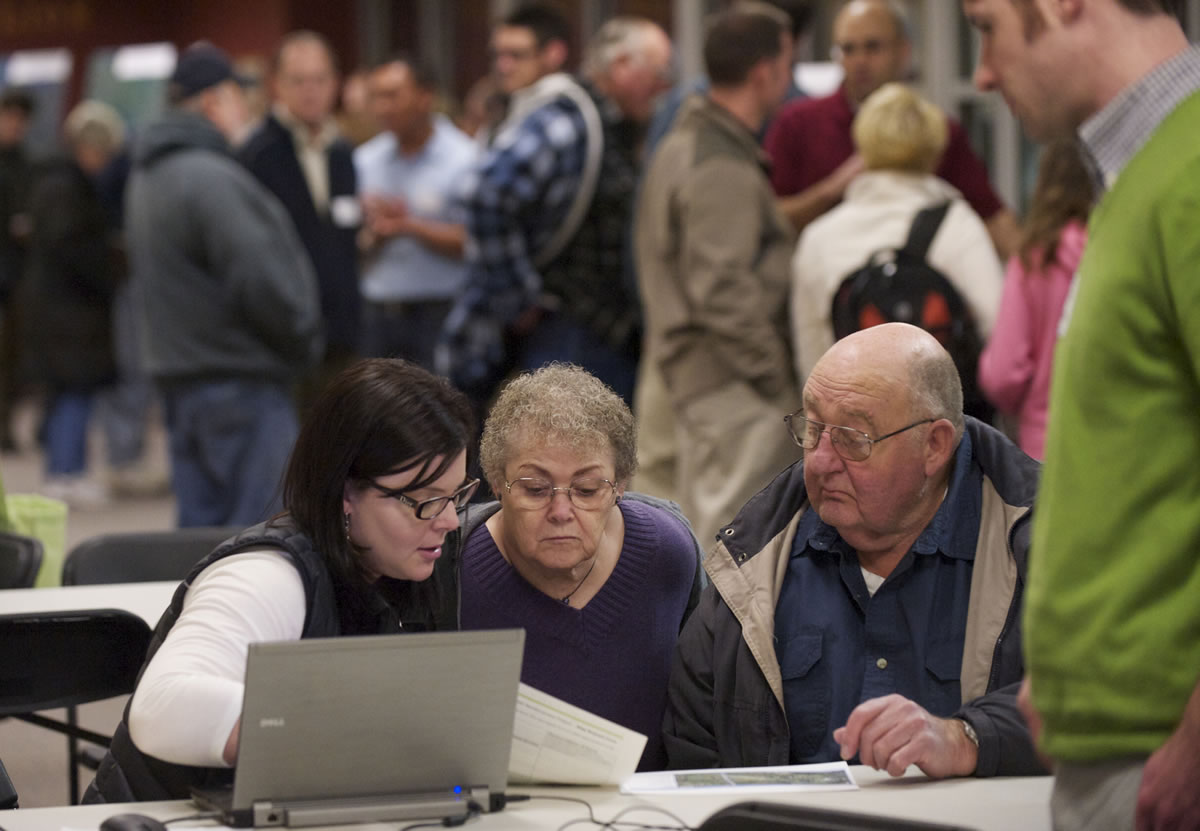? What: The next open house on a proposed transmission line.
? When: 1 p.m. Saturday, Jan. 12.
? Where: Amboy Middle School, 22115 N.E. Chelatchie Road, Amboy.
? More info: Meetings, comments, information on proposed BPA project.
CAMAS — As the Bonneville Power Administration continues to hone plans for a high-powered transmission line through Clark and Cowlitz counties, plenty of residents made it clear Thursday they feel the agency has more work to do.
More than 100 people turned out for an open house meeting in Camas, which sits in the path of the proposed 79-mile line. Only 14 signed up to speak during a formal public hearing. But many more took the chance to study detailed maps and chat with project officials.
The gathering was the first such forum since BPA announced its preferred route for the project last fall. Five more sessions will follow.
“I thought I should come down and look at it,” said Charles Farrell, who lives in the Camas-Washougal area. “You want to know just how close this is going to be to you.”
Farrell said his property isn’t affected by the transmission line. But for those who are, he said, “I feel for them.”
Thursday’s crowd was smaller than some previous meetings on the topic. But their worries were no less urgent — many cited familiar property and health concerns. One resident said she feels “held hostage” by the project, unable to do anything with her property with the specter of a new power line hanging over it.
The BPA first proposed the transmission line in 2009 as a way to ease a strained Northwest power grid and support growing energy demands across the region. The project would stretch a 500-kilovolt line between Castle Rock and Troutdale, Ore., connecting substations in those cities. The line would cross the Columbia River at Camas.
In November, BPA picked its preferred route among the four main options it had put on the table. In choosing the so-called Central alternative, the agency opted to steer clear of the Vancouver urban area. That line was detailed, along with the other three, in a nearly 2,000-page draft Environmental Impact Statement released with that decision.
Some citizens have called for an extension of the public comment period, scheduled to end March 1. With the draft EIS released in November, a large chunk of the comment period it triggered overlapped with the holiday season.
A Better Way for BPA, a citizen group represented Thursday by chairwoman Cheryl Brantley, has urged the agency to extend the deadline for comments by at least 90 days.
In an email, BPA spokesman Doug Johnson said the agency currently has no plans to extend the comment period but will consider such requests.
Camas Mayor Scott Higgins and city Councilor Steve Hogan urged BPA to look harder at a different approach to the line itself: putting it underground, at least in Camas. They argued BPA hasn’t done enough to consider that option, and should “find another route” if it’s not prepared to do more study.
BPA did include a lengthy analysis of underground lines in last year’s EIS. In it, the agency concluded such an approach was too costly and uncertain to pursue. As proposed, the new line is expected to cost $459 million, according to BPA.
BPA Project Manager Mark Korsness said the project will evolve as the latest round of public comment plays out. Planners can still tweak details such as utility tower locations and access roads as new impacts come to light, he said.
BPA plans to release a final EIS in 2014 and could begin construction in 2015.
“This is a multi-year project,” Korsness said. “We have some time to make some changes and lessen the impact.”
Eric Florip: 360-735-4541; http://twitter.com/col_enviro; eric.florip@columbian.com.




